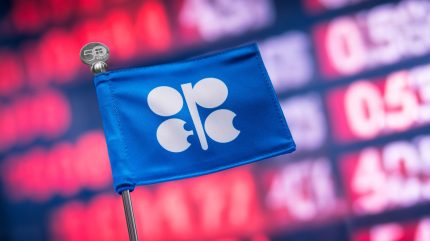
With just a few members exceeding their agreed limits, oil production from the Organization of the Petroleum Exporting Countries (OPEC) has remained constant for the third month in a row.
The intergovernmental body produced an average of just under 27 million barrels per day (mbbl/d) in June, some 80,000 barrels a day (bpd) less than during the previous month.
According to a Bloomberg survey, small reductions in Iraq and Nigeria’s output prompted the decline.
However, the analysis showed that Iraq and the United Arab Emirates have still not fully adopted the cutbacks agreed within the group earlier this year.
Iraq reduced output by 30,000bpd in June, to 4.25 million, although it still remains 250,000bpd above the new quota. Saudi Arabia’s production was just under 9mbbl/d.
Back in May, the International Energy Agency lowered its oil demand growth forecast for 2024, indicating weaker global demand than previously anticipated.
It now expects oil demand to grow by 1.1mbbl/d in 2024, a reduction of 140,000bpd from its previous forecast.
The OPEC member reductions were aimed at balancing global oil markets as production increased in several regions in the world, notably the US.
According to research from Bloomberg, the stabilisation should help increase crude oil revenues for members of OPEC, and its expanded sister organisation OPEC+.
Saudia Arabia, OPEC’s driving force and main producer, is planning huge infrastructure developments as it tries to slowly move its economy away from hydrocarbons and into renewables and other business areas.
For that to happen, it needs oil prices to stay around $100 for the foreseeable future. Brent crude on Tuesday morning was at $87 a barrel, while WTI was just under $84, having topped $90 in late September 2023.
OPEC+ recently announced it would ease up on self-imposed supply constraints, but senior figures within the body have been quick to say that any proposed increases are merely provisional and could be paused.
Meanwhile, there could be bigger issues ahead for OPEC, with the budget committee of the US Senate having just started an investigation into suspicions of collusion between several domestic oil producers and OPEC members over possible price adjustment and coordination.
The committee, which has the responsibility to oversee federal spending, will examine the activities and communications of almost 20 oil and gas producers.


